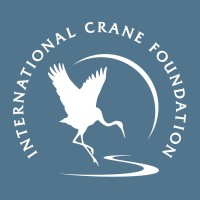Collecting Critical Data for Species Recovery and Habitat Restoration in Zambia
International Crane Foundation- Zambia (2023)
Designing and Implementing a Wetland Information System for the Kafue Flats Wetlands, Zambia
Project Details
Project News
Last Updated: August 22nd, 2025
Background
This project will implement a much-needed ecological monitoring, assessment, and management plan for the Kafue Flats wetlands in Southern Zambia. The plan aims to monitor important freshwater biodiversity indicators including threatened and endangered species, mammals, waterbirds, wetland vegetation, and other wetland parameters, as well as document human threats/management challenges such as invasive species, fire, water, and livestock density. Results will inform and drive the adaptive management of the Kafue Flats, especially the conservation of vital wetland biodiversity in this globally important ecosystem. 
The ecological monitoring plan will lead to a Kafue Flats Wetlands Information system, a comprehensive compilation of the ecological data and information generated from diverse local partners. This system will provide critical information to stakeholders and the public about the Kafue Flats wetlands, databases and inventories, education and research outputs, to guide restoration and mitigation actions.
Through partnership with local universities and with the Zambian Department of National Parks and Wildlife (DNPW), ICF aims to deepen local capacity for the Kafue Flats and across Zambia for wetland/freshwater biodiversity monitoring, science-based adaptive management, and provide a platform for efficient information generation and sharing amongst partners and stakeholders.
Project Details
Goals for the Designing and Implementing a Wetland Information System for the Kafue Flats Wetlands, Zambia project include:
Goal 1
A fully operational ecological monitoring plan for the adaptive management of the Kafue Flats. Indicators:
A peer-reviewed, science-based ecological monitoring and evaluation plan is operational (year 1).
Indicator data are collected and analyzed in accordance with the monitoring and evaluation plan (years 2 and 3)
Monitoring results feed into an adaptive management system and are used to evaluate and adjust project results and assumptions as appropriate through the Collaborative Management Partnership that governs the project (year 3)
Goal 2
A wetland information system is established for the compilation and management of, and open access to, ecological data, publications, and other information generated from our work and partners.
Indicators:
Develop a database with expert input (year 1)
Test database with monitoring data (years 2 and 3).
Establish the Kafue Flats website to provide open access to data and provides protocols for data access and use in research and publications (years 1-3).
Goal 3
Enhance Zambian capacity of ecologists, university students, community members, and DNPW in the design and implementation of a Wetland Information System.
Indicators:
DNPW Ecologists and university students trained to collect data and input the data into the information system (years 2 and 3)
Zambian community members, including community scouts, trained in field techniques to collect and process data (years 2 and 3)
DNPW staff (serving protected areas nationwide) are trained in the operation of an ecological monitoring and evaluation plan (years 2 and 3).
Project Director Biography
Kelvin Steven Floyd is a dedicated conservationist with 7 years of experience in invasive species management, wildlife surveys, research, and protected area management, with a particular focus on wetland ecology. He holds a BSc in Ecology and Wildlife Management and an MSc in Conservation Project Management. Serving as a Restoration Ecologist for the International Crane Foundation (ICF) on Kafue Flats, Floyd has been leading the removal of the invasive Mimosa pigra restoring critical habitat for wildlife, and undertaking research and monitoring associated with Mimosa removal, waterbird, crane and mammal surveys and environmental education raising awareness in schools on the importance of conserving the Kafue Flats. As the Research, Monitoring and Evaluation Manager for the Kafue Flats Restoration Partnership (KFRP), a 20-year collaboration between the Department of National Parks and Wildlife, WWF Zambia, and the International Crane Foundation/Endangered Wildlife Trust Partnership for Africa, Floyd coordinates research activities including collaborating with research institutions like the University of Zambia in assessing and collecting data of the biodiversity of the Kafue Flats. This includes collecting and building on the well-known bird and mammal species data and less documented biodiversity groups such as amphibians and reptiles (herpetofauna), molluscs, and invertebrates following a well-developed ecological monitoring plan. Floyd also leads the development of the Kafue Flats Wetland Information System (KFWIS), an open access and online platform for hosting, analyzing, visualizing, and sharing freshwater biodiversity data for the Kafue Flats Wetlands. The overall purpose of this platform is to support evidence-based decision-making and sound management practices of the Kafue Flats as a thriving wetland ecosystem.
Mwape Sichilongo is a career conservationist with more 30 years’ experience in conservation project design, management, and leadership, with a bias towards protected area management and biodiversity conservation policy and practice. As Regional Director for the Southern African Floodplains Regional Programme of the International Crane Foundation/Endangered Wildlife Trust Partnership for Africa, he currently leads the implementation of the 20 year Kafue Flats Restoration Partnership with the Department of National Parks and Wildlife and WWF Zambia. In this role, he will support multidisciplinary specialised teams to investigate the biodiversity status of the Kafue Flats ranging from the well known bird and mammal species diversity to the less-known amphibians, molluscs and invertebrates based on an ecological monitoring framework. Long term data will be used to set up the Kafue Flats Wetland Information System which will inform management decisions concerning the sustainable management and restoration of Kafue Flats to ensure that it remains a thriving wetland in perpetuity.
